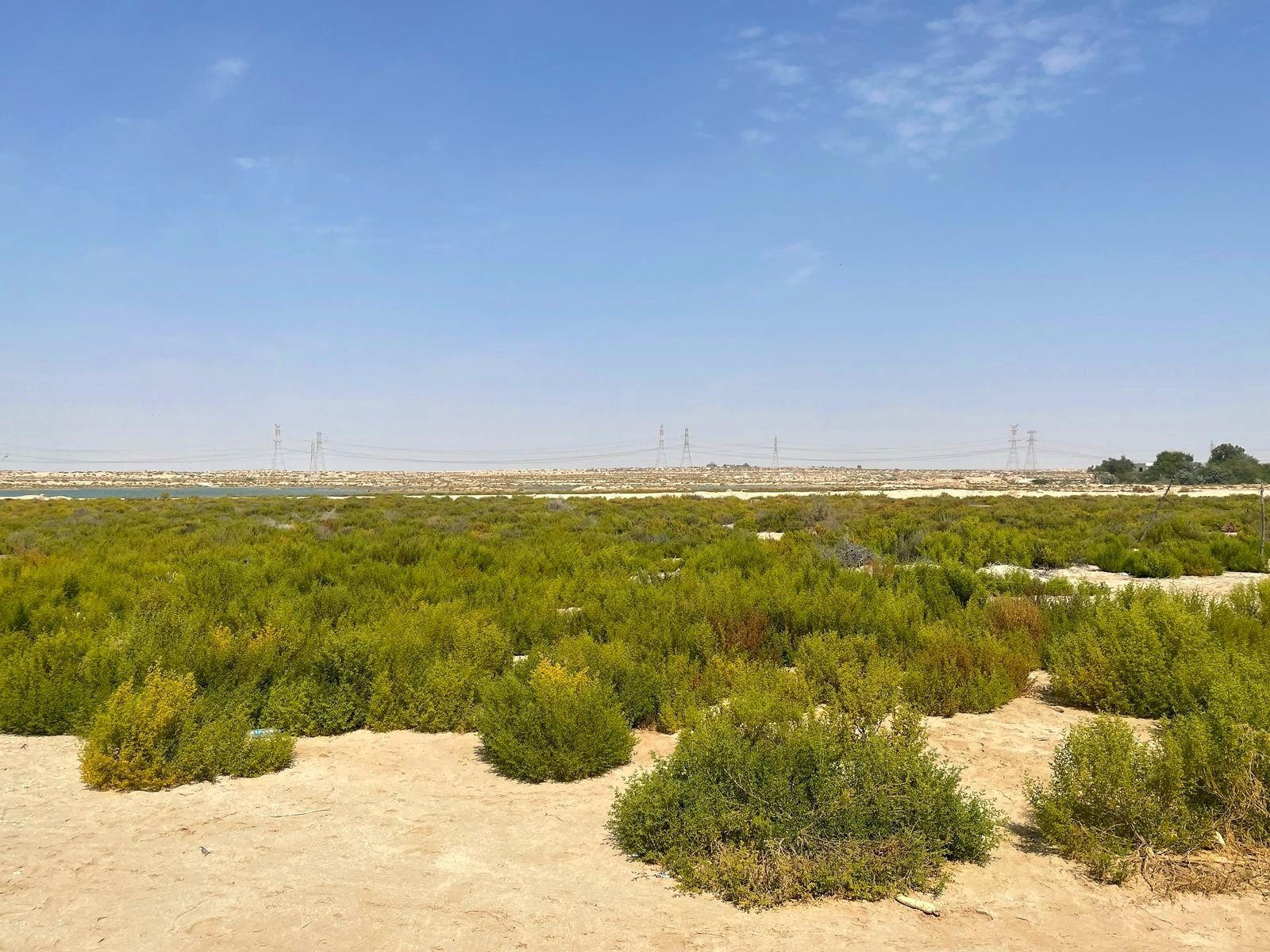The Fresh Press-Enterprise: A sustainable action project for paper production within the UAE using locally sourced agricultural waste $54,452 (2023)
All images on this page are by Tina Sleiman
This project was funded by Zayed University.
Abstract
The UAE consumes large quantities of paper (Khaleej Times, 2011), and this consumption has been paralleled with the establishment of numerous paper mills (Paper Arabia, 2022). However, most mills utilize wood-based paper from virgin pulp, severely impacting the environment. Papermaker Helen Hiebert (1998) lists various types of fibers that can be utilized in papermaking: Woody bast fibers (such as fig, hibiscus, and lime tree), Herbaceous bast fibers (e.g., okra, thistle, milkweed), Leaf fibers (e.g., pineapple leaves, lily), and Grass fibers (e.g., corn husk and stalk, beach grass, or wheat and barley straw). She also discusses the possibility of utilizing plants that are abundantly present, such as cattails and phragmites, or those that are regularly discarded, such as onion skins. In a study on pulp utilized in the paper industry, Singh and his colleagues (2013) explored the potential of oil palm biomass for paper production, concluding that palm can be an eco-friendly alternative to mainstream wood-based fibers. Crop residue paper has less than half of the environmental footprint of 100% virgin tree fiber, according to Step Forward Paper (2014). At the University of Illinois, Associate Professor Eric Benson recently established, in collaboration with papermakers, farmers, artists, designers, students, architects, and material science engineers, Fresh Press Paper, “an interdisciplinary faculty and student research studio that explores the potential for sustainable paper production”. The initiative is well esteemed, having acquired the International Design Award in 2013 and the SSC Excellence in Innovation Award in 2017. In collaboration with Eric, we propose to explore the potential of utilizing native Emirati plants and agricultural waste material as fibers to make paper. The first goal is to make artisanal paper for art students’ hand-drawn or hand-painted projects. The longer-term goal is to have the paper tested for printing using digital printers as well as using the letterpress that we currently possess at Zayed University’s Abu Dhabi campus.
Results
The research team produced a dozen different kinds of papers from local agricultural waste through the following steps: beating the fiber to create the pulp, using moulds and deckles to strain the pulp and form it into paper sheets, pressing the sheets to remove excess water, drying the sheets on window glass and by hanging on a rope, and pressing the dried sheets to soften wrinkles.
The main finding is that palm core fiber is difficult to turn into handmade paper unless aided by heavy mechanical and chemical means, which are beyond the scope of this study. Palm leaves were achievable but still required a long cooking and processing time, and resulted in hard heavy heavy-textured paper, but the leaves that were used were not completely dried. We then learned that plants should be completely dried to avoid chlorophyll from affecting the acidity and color of the paper.
On the other hand, plants that were proven to have potential included canna indica, fountain grass, oleander, laurel, corn leaves and husks, and the stems of zucchini, squash, and eggplant, especially when mixed with recycled cotton fiber. These were sourced from the university campus as well as from the farm of Mr Ali Almarzooqi.
A visit to the Flower Farm and a discussion with its owner, Mr Ahmed Al Mazrouei, who expressed interest in the project, opens future possibilities for collaboration.
Integrating petals of potted flowers (such as marigold) into cotton paper resulted in positive outcomes, but has not yet been applied to art and design applications.
While chemical sizing is the most common one, we experimented with organic types of internal sizing (gelatin, corn starch, and rice flour) guided by Drew Matott. The gelatin seemed to work best, but we need to further experiment to find the right dosage.
We are studying the potential of utilizing fiber from dried desert shrubs “Al Rimtha” that grow around campus and in local desert areas, with Okra water as a natural fiber gluing agent, while working closely with the artist and ZU employee Salmah Al Mansoori.
Publications
Sleiman, T., Benson, E., and Al Anouti, F. Pedagogical Approaches in Making, Characterizing, and Utilizing Specialty Paper Made from Locally Sourced Agricultural Waste at Zayed University. Article, under review by the International Journal of Political Ecology and Environmental Culture.
Sleiman, T., Benson, E., and Al Anouti, F. (2024). The Fresh Press Enterprise: A sustainable action project for paper production within the UAE using locally sourced agricultural waste. Pecha Kucha conference presentation. World Environmental Education Congress WEEC 2024, Abu Dhabi, UAE. (Conference proceedings following this presentation have been submitted and are still awaiting review.)









